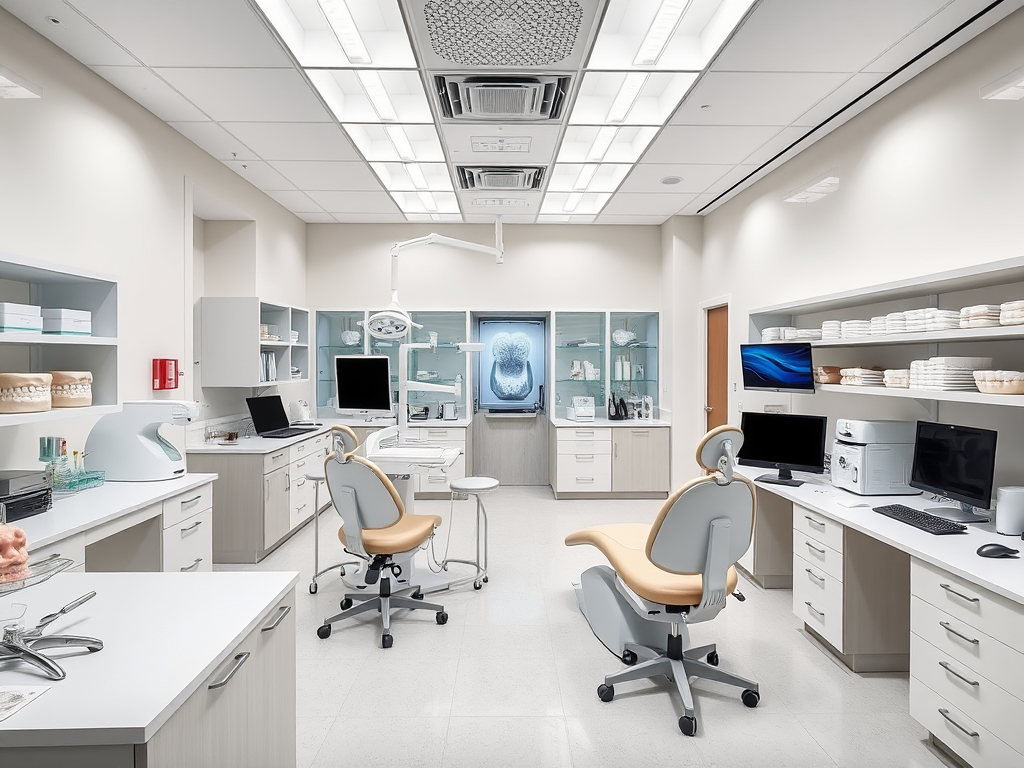Selection Guide for Different Zirconia Materials
2024-11-18
2025-03-27
Designing a dental lab is a significant undertaking that requires careful planning and consideration of multiple factors. Whether you are setting up a brand-new lab or renovating an existing one, this guide aims to provide you with a comprehensive overview of what you need to consider when designing a dental lab.

Before diving into the design details, it’s essential to understand the primary functions of a dental lab. Dental labs serve to create dental appliances, restorations, and prosthetics such as crowns, bridges, dentures, and orthodontic devices. The main purpose is to support dental professionals by providing high-quality products that meet patients' needs.
The first step in designing a dental lab is to consider the available space. The lab must be spacious enough to accommodate workstations, equipment, storage, and workflow efficiency. Typically, a dental lab should include:
· Workstations: For technicians to perform model work, waxing, casting, and finishing.
· Storage Areas: For raw materials and finished products to ensure an organized workflow.
· Room for Machinery: If using larger equipment such as CAD/CAM systems, ensure adequate space for these items.
Creating an efficient workflow is crucial in dental lab design. The layout should facilitate smooth movement between different areas, such as:
· Receiving Area: Where dental impressions and materials are first received and logged.
· Processing Area: Where technicians fabricate and modify dental products.
· Finishing Area: For polishing and packaging finished products.
Dental labs must adhere to various health and safety regulations. Ensure your lab design incorporates:
· Accessibility: Comply with the Americans with Disabilities Act (ADA) or your local regulations.
· Ventilation: Proper air circulation and filtration to manage dust and fumes from materials.
· Safety Equipment: Installation of eyewash stations and fire extinguishers, along with proper waste disposal systems.
Choosing the right equipment is a critical aspect of dental lab design. Some essential equipment includes:
· Dental CAD/CAM Systems: For designing custom restorations and prosthetics.
· Model Trimmers and Lathes: For shaping and finishing dental models and appliances.
· Casting Machines: For creating metal frameworks.
· 3D Printers: For rapid prototyping and production of dental items.
Investing in high-quality and modern equipment can enhance productivity and the quality of work produced.
The interior design of a dental lab should promote both functionality and aesthetics. Consider the following elements:
Proper lighting is essential in a dental lab to ensure technicians can work with precision. Implement a combination of general lighting, task lighting at workstations, and accent lighting in the storage areas for an overall well-lit environment.
Colors can influence mood and productivity. Lighter colors often promote a sense of calm and cleanliness, which can benefit both staff and patients.
Workstations should be designed to promote ergonomic practices. This includes adjustable seating, organized tool storage, and workstation height adjustments to prevent strain and injuries.
Developing a cleaning and maintenance schedule is vital in a dental lab to maintain hygiene and equipment. Consider:
· Daily Cleaning: Regular disinfecting surfaces and equipment after each shift.
· Monthly Maintenance: Professional servicing of machinery to ensure optimal performance.
· Material Management: A systematic approach to inventory management to avoid excess or running out of essential materials.
Designing a dental lab is a multifaceted process that requires thoughtful consideration of space, workflow, equipment, regulations, and aesthetics. By following this comprehensive guide, you can create a functional, safe, and inviting dental lab that enhances productivity and meets the needs of dental professionals and patients alike. Emphasizing careful planning and adherence to best practices will lay the groundwork for success in your dental lab endeavors.
Implement these guidelines, and you’ll be well on your way to establishing a top-notch dental laboratory!